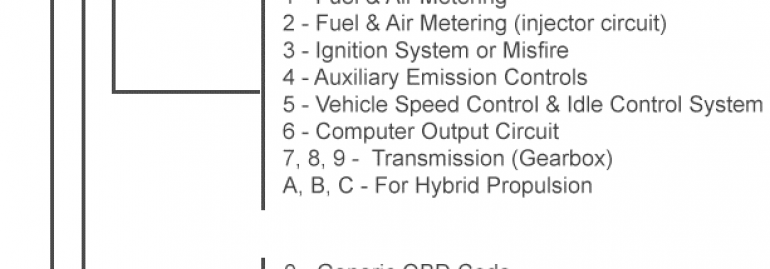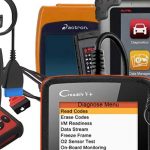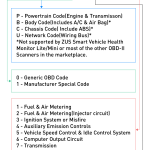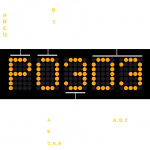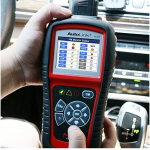
If you are wondering what is an OBD code, read this article. It will explain the difference between an OBD1 and an OBD2. Also learn about the EOBD connector. These are the two connectors found on your vehicle. OBD1 is connected to the vehicle console, while OBD2 connects to the vehicle remotely. The first was used in the early days of car manufacturing, but was replaced by OBD2 in the early 1990s.
OBD2
An OBD port is a port on a vehicle that allows for the transmission of information. A variety of devices can be used to connect to the port. One such device is an OBD scanner. This device will allow the driver to view diagnostic information and data. A vehicle that has this device can see and receive a wide variety of diagnostic data, including speed and engine condition. The SAE J1979 standard defines 10 diagnostic services. Some of the diagnostic services are standard, while others are manufacturer-specific.
The first OBD system was introduced in 1991 and was intended for vehicles made from 1991 to 1996. The main focus of OBD1 was the emissions and discharge systems. It was conceived to provide a futuristic tool for car manufacturers. In contrast, OBD2, known as the Federal Universal Standard, has much more processing power and is useful for mechanics. OBD2 is also much more flexible, allowing it to check all areas of a vehicle, whereas OBD1 was limited to a few systems.
OBD2 diagnostic ports can read a variety of data, including Status Information, Diagnostic Trouble Codes, Emission Control Systems, Vehicle Identification Numbers, and Calibration Identification Numbers.
Having the information is a good way for a mechanic to diagnose a vehicle and prevent problems from happening. This system is widely used and makes it easier for mechanics to detect issues before they even happen. In many cases, an OBD scanner can read trouble codes even before the vehicle owner is aware of them.
On-board diagnostics are computer systems that monitor a vehicle’s engine, emissions system, and other important components. They can alert the owner of a malfunction or an auto mechanic who can use an OBD scanner to repair the problem. A malfunction indicator light can be displayed on the dashboard, which means there’s a problem. After the vehicle is repaired, the OBD scanner will clear the trouble codes.
EOBD codes
The first digit of the EOBD code is the manufacturer’s initial, followed by four numbers. These codes are generic, or can be generalized across all vehicles that use the OBD2 standard. A common fault message is assigned to these codes. Alternatively, codes beginning with a 1 are manufacturer-specific, meaning they are unique to a particular model. They will not be used by most manufacturers. As a result, you need to check the manufacturer’s website to find out which codes are causing your car to fail.
EOBD systems are mandatory in new vehicles manufactured after July 1, 2008. However, some regions may have regional exceptions to the rule. Nevertheless, in many cases, the EOBD system will disable itself if the fuel tank is less than 20% of its capacity. Moreover, some EOBD systems may not function properly if the engine is started at temperatures of less than -7 degC or at an elevation of more than 2,500 meters above sea level. If this is the case, the manufacturer should submit engineering evaluation and data that demonstrates the unreliability of EOBD systems.
If you see a “2” trouble code, you may have a fuel injector problem, or an air metering injection system problem. Then, “3” trouble code is triggered by a problem with the emissions system, while “4” is caused by an issue with the vehicle’s idling control. A “6” trouble code may indicate problems with the transmission or computer output circuit. Regardless of the type of trouble code that is being displayed, it is important to have the proper tools to diagnose the underlying problem.
In general, the more critical the DTC, the more severe the issue. In some cases, a worn alternator can set multiple codes. If you’re unsure of whether you should fix your vehicle, it’s best to consult a mechanic who is a certified technician. EOBD codes are a must-have in the car repair industry. They are not meant to be interpreted by the average person. A qualified technician will be able to diagnose them and determine whether or not the issue is serious.
Diagnostic trouble codes
If you have a check engine light on your car, it’s a good idea to take note of the diagnostic trouble codes. These five-digit codes refer to specific problems that may affect your car’s engine or other functions. Once your scanner has connected to the car’s OBD system, the codes will be displayed. Each DTC is unique and is associated with a specific problem. The first digit is the manufacturer code, while the other four are generic.
The On-Board Diagnostics system generates DTCs when something goes wrong with your car. The codes describe the problem and help the mechanic determine where the issue lies. Different vehicle manufacturers use different DTC codes, so it’s important to understand what the codes mean before you begin working on your car. These codes are most useful when used in conjunction with flow charts in a car’s service manual. This will help the technician determine the likely cause of failure and make the right repairs.
Diagnostic trouble codes are codes stored in the onboard computer system of a vehicle. When there’s a problem, these codes are used by the manufacturer to troubleshoot the problem. The codes are updated regularly as new problems are discovered. They are divided into generic and manufacturer-specific codes. Generic codes apply to all vehicles, while manufacturer-specific codes are specific to one vehicle maker. If you notice a code that is not working, take the vehicle to a repair shop immediately to see what it means.
DTCs are typically five characters long. Each digit represents a different function, so you should learn the various meanings of each one. P codes, for example, mean powertrain problems, while C and DTCs refer to the chassis, braking system, and onboard computer functions. The first digit of a DTC is the green digit, and it tells the technician whether the code is generic or not. The DTC is an essential tool for determining a vehicle’s problem.
Data link connector
Data link connector is a multi-pin diagnostic connector used to connect a scan tool to an electronic control module in a vehicle. It enables the vehicle to communicate with the diagnostic tools via live data streams. Type A connector is used for vehicles with 12V supply voltage while Type B connectors are used with 24V supply voltage. Data link connector is often found beneath the dashboard, near the driver’s seat. However, despite its importance in diagnosing problems, the connector typically remains unused. Vehicle tracking systems also use diagnostic codes for tracking vehicles via GPS. GPS trackers are plugged into OBD-II port, collecting data on the vehicle.
Earlier versions of the data link connector were not standardized. Every manufacturer had its own connector shape and pin arrangement, which led to the creation of different types of OBD connectors. Even after the OBD standard was adopted, many manufacturers remained committed to proprietary connectors. The OBD-II data link connector enables vehicles to communicate with each other, including diagnosing engine and transmission problems. Mode 1 displays Current Data, while other modes display stored trouble codes and freeze frame data.
This diagnostic connector is used to communicate with the car’s computer system. The pinouts are used to determine which protocol a car uses. If the pins are marked with symbols, then they refer to the OBD-II protocol. Data link connector for obd, or DLC, is found in vehicles manufactured after 1996. These vehicles must use an OBD-II computer system, which is accessed through a Data Link Connector.


